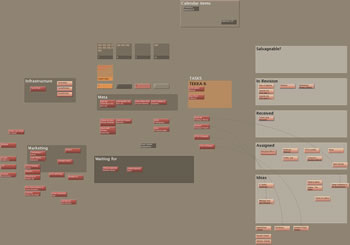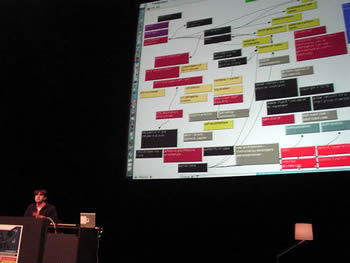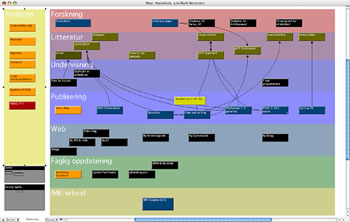What's the matter with new media criticism?
Yes, there's some lively, thoughtful work. Rich Higgason's new study of Mary-Kim Arnold's Lust (presented last week at Hypertext '04) is quite fine. We've made some progress, I think, from the time just three years back when serious people seriously though that giving a cash prize to someone-or-other was all we needed.
Writing is hard. Reading is hard. You've got to work at it, and you've got to know what you're doing and how to do it.
Look at Adam Gopnik's The Big One, in the August 23rd New Yorker. (Look now: New Yorker links go stale) It's a masterful review of a slew of recent studies of World War I, informed by an even larger bundle of older histories. Gopnik offers strong opinions, strongly defended, but he also reads everything with sympathy and explains each position with care.
Two kinds of 'inevitablism' have long held sway as explanations for the deeper sources of the catastrophe. One, made famous by Lenin, and still cited by some historians on the left, is that the war was the certain consequence of imperial overstretch and colonial rivalry.... Of this hypothesis, nothing really remains. The German Weltpolitik, the new historians tell us, for the most part drew Germany away from the European heartland, into minor skirmishing on the periphery. The globalization of the world economy, in turn, which in the first decade of the last century had reached a peak to be equalled again only in our own time, depended on peace. The bankers and industrialists were the last people in Europe who wanted a war.
I've read none of the new work he discusses, but because I've read several of the older pieces and generally agree with his judgments I'm inclined to trust him on the new stuff.
Most important, Gopnik's telling us about the Great War, about what it means now, and about what History means and inspires. Our leaders are just as foolish, our zealots just as ignorant, and our weapons just as terrible as those of 1914. This is a conversation worth having.
At the Hypertext '04 workshop on Spatial Hypertext, Cathy Marshall showed some preliminary data from a study of the way real people read The New Yorker -- how they turn the pages, how they use fingers to hold their place, how they move on the sofa, how they flip here and there. Reading is a lot more complicated than people think.
Then, look at Julian Küklich's review of First Person, Noah Wardrip-Fruin's and Pat Harrigan's anthology of game studies and other new media reflections. (I'm a contributor to First Person, but Küklich doesn't particularly savage me. In fact, he praises my contribution for its apparent lack of technological determinism. That's nice. He did forget to mention my confit de canard, though, which is often tasty and which is every bit as relevant to Greco and Bernstein's essay on Card Shark and Thespis as technological determinism.)
He takes Jill to task for reasons I find obscure. He has some questions about the Online Caroline, the work she studied -- something to do with Motte's approach to Nabokov. He'd have liked her to write about this; she wrote about something else. Brief essays seldom answer all the questions a specialist might ask about a work or a genre, and if you ask little essays to carry all your luggage, you're destined to spend a lot of your life watching your suitcases tumbling about.
Here's his ringing conclusion: the book's numerous writers have not solved all of his worries.
Some of them are academics and some of them are practitioners, but they all have one thing in common: they have no clue what they are dealing with. But, then, neither do we, the users of new media. It is reassuring to know that we are all in the same boat.
You know, Fussell and Keegan and Ferguson and Strachan don't solve that Great War, either. You could say (if you were in a sour mood) that, collectively, they don't have a clue. But sour moods are contagious: how much nicer, instead, to look broadly and generously for ideas, and then to weigh them with care and sympathy?
My point is not that Kücklick's review is bad (it's not), or that I disagree with it, or that I think you shouldn't read it. The problem is that it's about buying the book, not the subject. And, as a subtext, it's about whether the contributors should keep their jobs or be exiled from academe. The latter topic is unseemly, and the former is less than compelling.
- Reading a long review to decide whether to spend $27.17 is a doubtful proposition
- Lots of people who would normally find Kücklich's review and who might follow his points about critical theory are instructors; they can get a free copy from the publisher with a phone call.
- Lots of people who will read this volume are the students of those instructors. Once the text is assigned, they're rather stuck.
Why don't we talk more about the things that really interest us -- enjoying new media, crafting fine software, saving the planet -- and less about buying decisions and tenure points?




